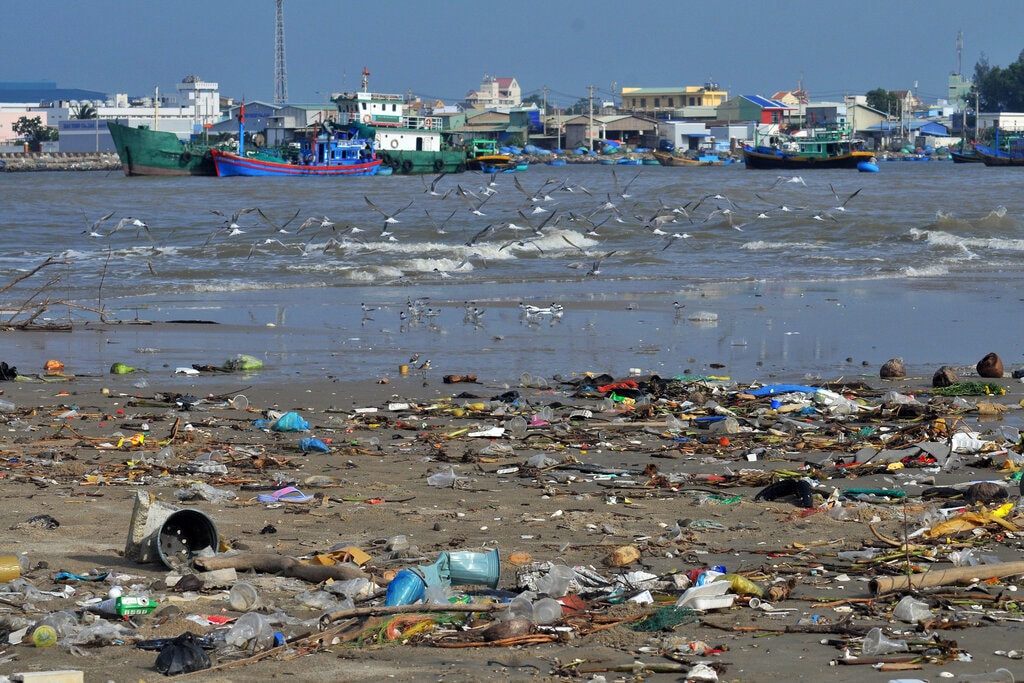Water pollution is putting our health at risk. Unsafe water kills more people each year than war and all other forms of violence combined. Meanwhile, less than 1% of the Earth’s freshwater is actually accessible to us and it’s in our best interest to protect what we have, especially considering that by 2050, global demand for freshwater is expected to be one-third greater than it is now. Here are six causes of water pollution, as well as what we can do to reduce it.
—
Water is uniquely vulnerable to pollution because it’s able to dissolve more substances than any other liquid on Earth. Toxic substances from farms, towns, and factories readily dissolve into and mix with it, which causes water pollution as a result.
6 Most Common Causes of Water Pollution
1. Sewage and Wastewater
According to the UN, more than 80% of the world’s wastewater flows back into the environment without being treated or reused; in some least-developed countries, this figure tops 95%. Harmful chemicals and bacteria can be found in sewage and wastewater even after it’s been treated. Households release sewage and wastewater, which makes its way to the ocean, mixing with freshwater and affecting the water quality and marine life. Also, the bacteria and pathogens found in wastewater breed disease, and cause health-related issues in humans and animals.
2. Oil Spills
Large oil spills and leaks are some of most significant causes of water pollution. These are often caused by oil drilling operations in the ocean, but nearly half of the estimated 1 million tons of oil that makes its way into marine environments each year come not from oil tankers, but from land-based sources like factories, farms and cities. In England and Wales, there are about 3,000 pollution incidents involving oil and fuel each year. Oil makes drinking water unsafe and a substantial amount of oil released into oceans or become river water pollution, will destroy marine life and the ecosystems that support them. What’s more, oil reduces the oxygen supply within the water environment. Oil is also naturally released from under the ocean floor through fractures known as seeps.
You Might Also Like: How Do Oil Spills Affect the Environment?
3. Industrial Waste
Industrial waste is one of the biggest sources of water contamination. Many industrial sites produce waste in the form of toxic chemicals and pollutants, and some don’t have proper waste management systems in place. Sometimes, industrial waste is dumped into nearby freshwater systems. The toxic chemicals leached from this waste can make the water unsafe for human consumption, and they can also cause the temperature in freshwater systems to change, making them dangerous for marine life. Finally, industrial waste can cause “dead zones,” which are areas of water that contain so little oxygen that marine life cannot survive in them.

4. Agricultural Runoff
To protect crops from pests, farmers use pesticides, however when these substances seep into the groundwater, they can harm animals, plants and humans. Additionally, when it rains, the chemicals mix with rainwater, which flows into waterways and creates further pollution. Other agricultural processes such as uncontrolled spreading of slurries and manures, tillage and ploughing the land can also cause water pollution.
5. Marine Dumping and Plastic Pollution in the Sea
Most items collected and dumped into oceans by many countries can take anywhere from two to 200 years to decompose completely! Other sources of waste at sea include plastic and other materials blown or washed from land. Currently, about 11 million metric tons of plastic make their way into the oceans each year. Research has found that should this rate of pollution continues, the amount of ocean plastics will grow to 29 million metric tons per year by 2040. The damage to wildlife habitats and to life on land is incalculable.
You Might Also Like: 8 Shocking Plastic Pollution Statistics to Know About
6. Radioactive Waste
Radioactive waste can persist in the environment for thousands of years, making disposal a major challenge and one of the most harmful water contaminants. Radioactive waste released from facilities that create nuclear energy can be extremely harmful to the environment and must be disposed of properly; uranium, the element used in the creation of nuclear energy, is a highly toxic chemical. Accidents occur at these facilities from time to time, and toxic waste is released into the environment.
In April 2021, Japan discharged contaminated water containing radioactive materials from the damaged Fukushima nuclear plant into the sea. Though the Japanese government claims potential health risks and damage to marine life to be minimal as the waste water have been treated, close monitoring is required to ensue there are no environment effects from the water pollution.
You Might Also Like: The Nuclear Waste Disposal Dilemma
How Can You Reduce Water Pollution?
- Reduce your plastic consumption and reuse or recycle plastic when you can.
- Properly dispose of chemical cleaners, oils and non-biodegradable items.
- Use phosphate-free detergents – phosphates lead to algae blooms and kill fish and other aquatic animals by reducing the oxygen in the water.
- Dispose of medical waste properly.
- Eat more organic food, which is produced without the use of pesticides.
- Cut down on your meat consumption – raising animals for meat takes lots of water for the grains and other feed they need. Furthermore, the antibiotics and solid waste are both likely to end up in groundwater and rivers.
You Might Also Like: Flood Water Contamination Threatens Communities Living Near Chemical Facilities – Can Private Law Protect Them?

















